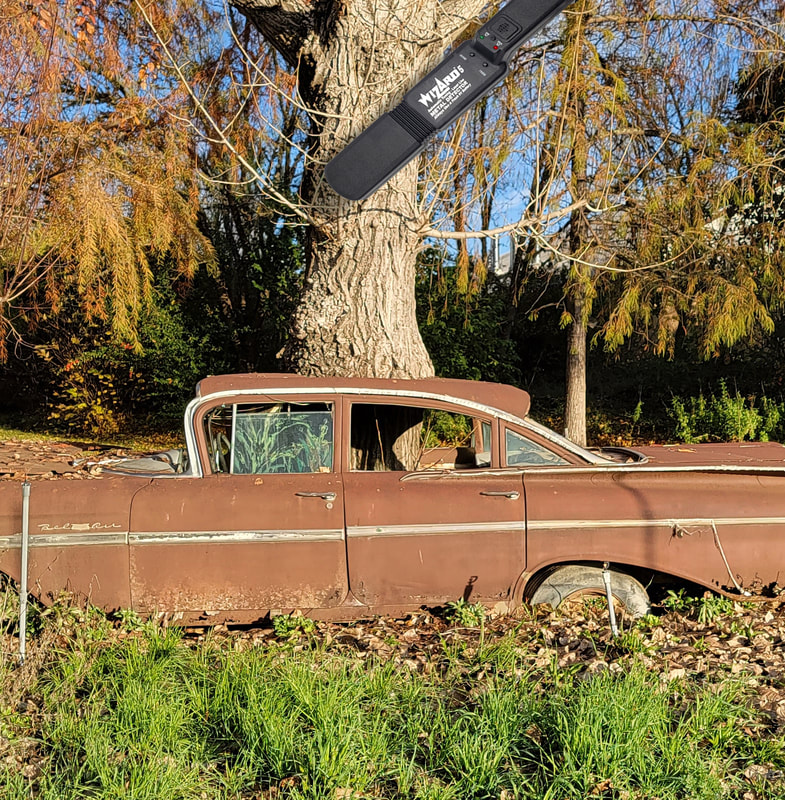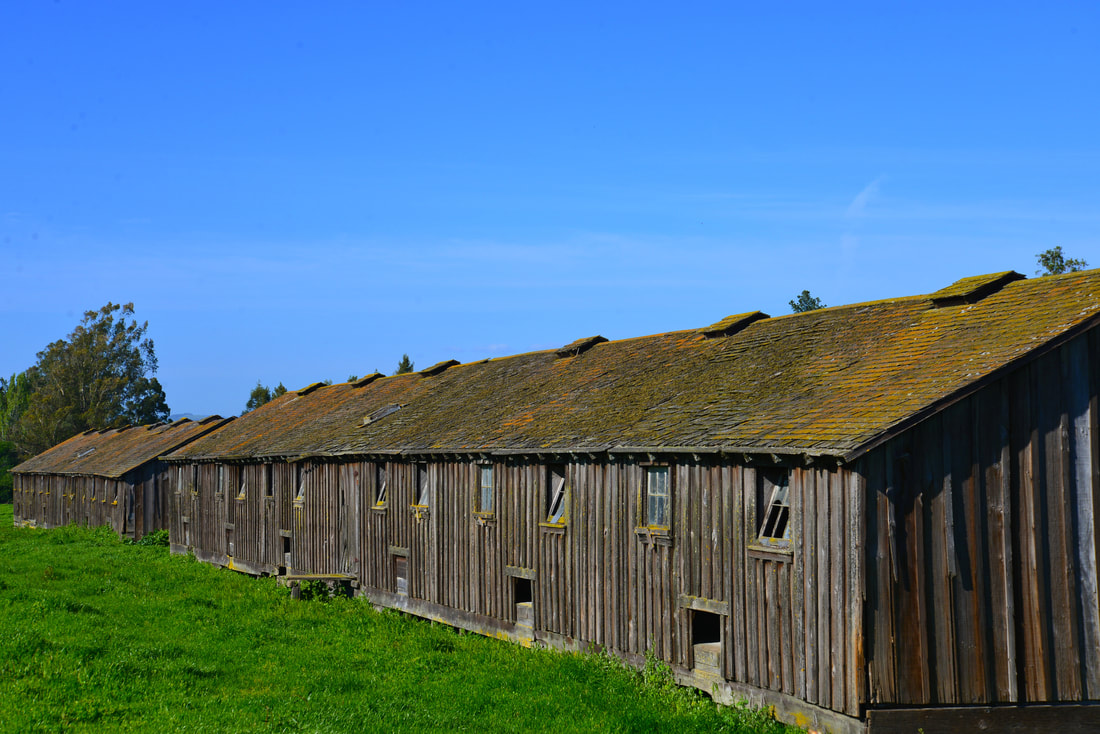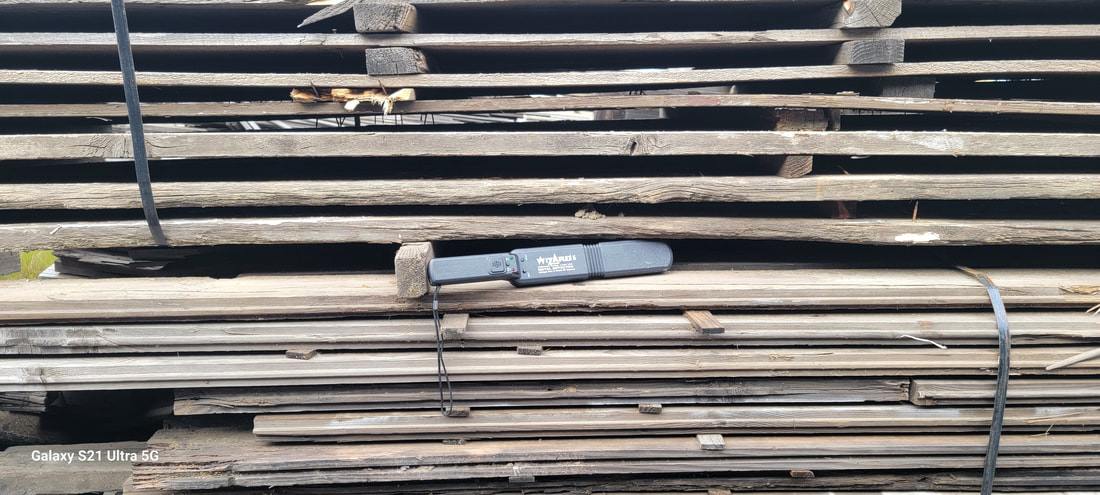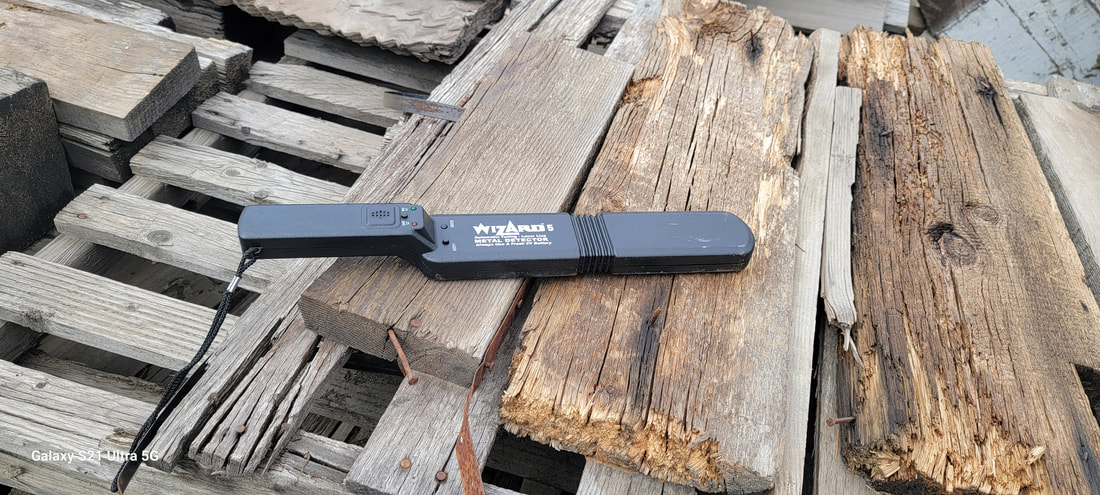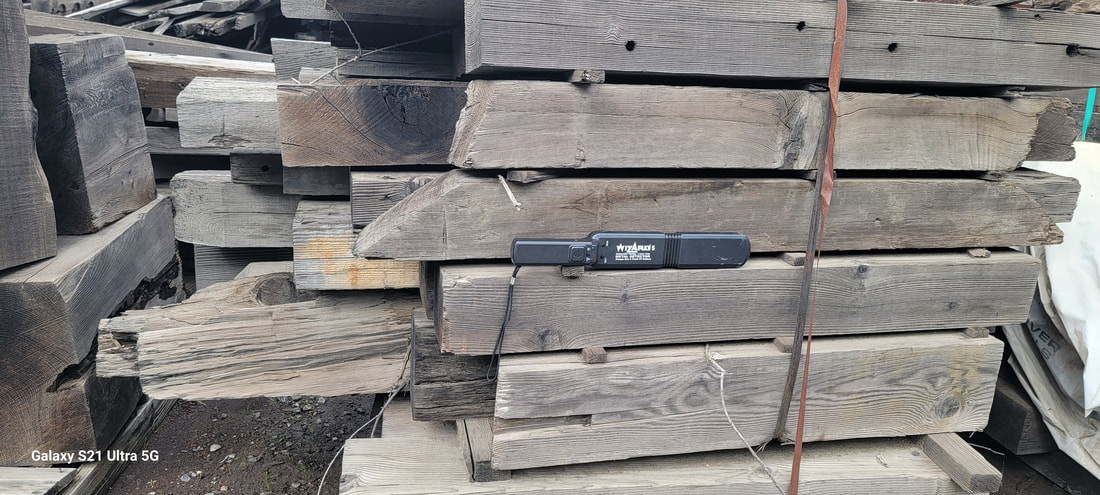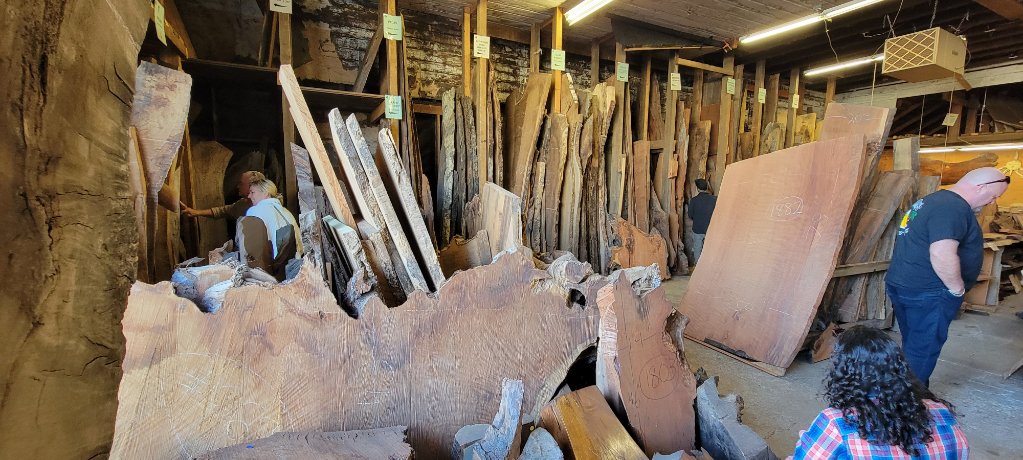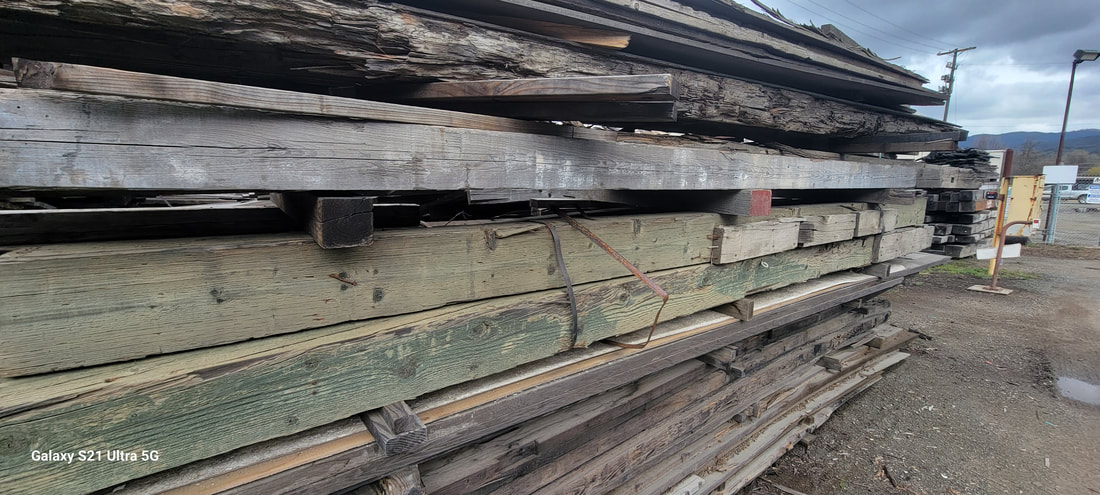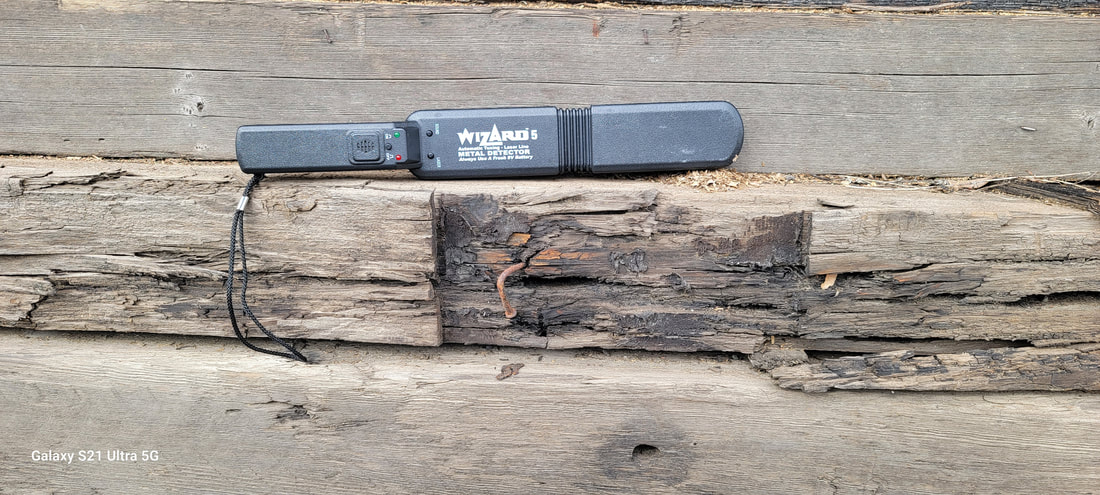 Woodworking plays a crucial role in the skateboarding world, as the construction of skateboards and ramps heavily relies on woodworking skills. Additionally, some woodworkers are also avid skateboarders, combining their passion for both activities to create custom skateboards and structures. Skateboards are typically made from layers of thin, flexible wood veneers, usually maple or Baltic birch, which are glued together and pressed into the desired shape. The process of making a skateboard deck requires skilled woodworking techniques, including cutting, shaping, and sanding to create a smooth, comfortable, and durable product. Some skateboarders, especially those with woodworking skills, choose to make their custom decks, tailoring the design to their preferences and style.
In conclusion, woodworking is an integral part of skateboarding, with skilled woodworkers creating durable and stylish skateboards, ramps, and obstacles. Skateboarding woodworkers combine their passions to produce custom creations, contribute to skateboarding culture, and share their knowledge with others.
0 Comments
 Many scientists, known for their analytical and problem-solving skills, also enjoy the creative and hands-on nature of woodworking. Here are a few examples of scientists who have engaged in woodworking:
These examples demonstrate that woodworking can be an enjoyable and rewarding hobby for individuals from various backgrounds and professions, including scientists. The hands-on nature of woodworking can provide a creative outlet and a way to relax and unwind from the demands of scientific work.  The history of the woodworking planer dates back to ancient times, with evidence of wooden planes being used by the Romans and Egyptians. Early woodworking planes were made entirely of wood, with a metal cutting blade secured in a slot on the bottom surface. The craftsman would push the plane along the workpiece to remove thin layers of wood and create a smooth, even surface. In the 18th century, advancements in metalworking allowed for the production of iron-bodied planes, which were more durable and accurate than their wooden counterparts. English craftsman Thomas Saint is often credited with the first iron plane design in the mid-18th century. The development of the industrial revolution led to the creation of mechanical planers, which used a rotating cutter head to plane large boards with greater efficiency than hand planing. The first patent for a mechanical planer was granted to William Woodworth in 1824. Woodworth's design used a series of infeed and outfeed rollers to move the workpiece past the cutter head, which was driven by a steam engine or waterwheel. Over time, mechanical planers were refined and adapted for various applications, including the production of flooring, furniture, and cabinetry. The introduction of electric motors in the late 19th and early 20th centuries further revolutionized the planer's design, making it more compact, efficient, and accessible for small workshops and hobbyists. Today, woodworking planers come in various sizes and styles, from handheld electric planers to large, industrial models for high-volume production. Many modern planers incorporate advanced technologies, such as computer-controlled cutting and digital readouts, to improve accuracy and efficiency. When using planers on reclaimed wood, it is essential to use tools like the Little Wizard and Lumber Wizard Woodworking Detectors to detect hidden metal objects, such as nails or screws, which can damage planer blades and cause potential safety hazards. Retailers like Rockler, Woodcraft, Klingspor's, Infinity Tools, Lee Valley Tools, and many others sell the Wizard line of woodworking metal detectors, making them accessible to woodworkers everywhere. The history of the woodworking planer reflects continuous advancements in design and technology, driven by the need for efficient, precise wood surfacing in various applications. With the integration of metal detectors like the Little Wizard and Lumber Wizard, woodworking planers continue to be an essential tool for woodworkers of all skill levels. The history of bandsaws can be traced back to the early 19th century. In 1809, an Englishman named William Newberry patented a continuous saw blade design that was flexible enough to be wound around two or more wheels. However, the material technology of that time could not produce a sufficiently strong and flexible blade that could withstand the stress of continuous operation.
In 1846, a French woman named Anne Paulin Crepin developed a method for welding the ends of steel strips together to create a continuous, flexible blade. Her invention was patented in France and England the same year. It was a significant advancement in bandsaw technology, as it allowed for the production of continuous, durable blades that could withstand the stress of sawing. Soon after, a Frenchman named A. Perin & Company began manufacturing bandsaws using Crepin's blade welding technique. The bandsaw became a popular tool in woodworking and metalworking industries, thanks to its ability to make precise, intricate cuts with minimal waste. In the late 19th and early 20th centuries, bandsaws continued to evolve as power sources transitioned from steam to electric. The introduction of electric motors allowed for greater control over the saw's speed and accuracy, making bandsaws even more versatile and efficient. Modern bandsaws come in various sizes and configurations, including portable models for job sites and large, industrial models for high-volume production. Many bandsaws now incorporate advanced technologies such as computer-controlled cutting and laser guides to improve accuracy and efficiency. When using bandsaws to cut reclaimed wood, the Little Wizard and Lumber Wizard Woodworking Detectors are invaluable tools. These metal detectors help woodworkers identify and avoid hidden metal objects, such as nails or screws, which can damage bandsaw blades and cause potential safety hazards. Retailers like Rockler, Woodcraft, Klingspor's, Infinity Tools, Lee Valley Tools, and many others sell the Wizard line of woodworking metal detectors, making them accessible to woodworkers everywhere. The bandsaw's history reflects a continuous evolution of design and technology, driven by the need for efficient, precise cutting in woodworking and metalworking applications. With the integration of metal detectors like the Little Wizard and Lumber Wizard, bandsaws continue to be an essential tool for woodworkers and metalworkers alike.  Connecticut has a rich history of woodworking and woodworkers, with many notable individuals contributing to the craft. Here are some aspects of woodworking in Connecticut: Notable woodworkers:
Tree types: Connecticut is home to a variety of tree species, including oak, maple, cherry, and walnut. These hardwoods are commonly used for furniture making, cabinetry, and other woodworking projects. Furniture history: Connecticut has a long history of furniture making, dating back to the colonial era. Early Connecticut furniture was heavily influenced by English styles, featuring simple lines and functional designs. As the state developed and prospered, furniture styles evolved to incorporate more ornate and decorative elements. Little Wizard and Lumber Wizard metal detectors: Woodcraft is a popular woodworking retailer in Connecticut, and they carry the Little Wizard and Lumber Wizard metal detectors. These tools help woodworkers locate hidden nails and other metal objects in reclaimed and salvaged wood. Flooring, reclaimed wood, and salvage wood: Reclaimed and salvaged wood is popular among Connecticut woodworkers for its unique character and eco-friendly nature. Many woodworkers use reclaimed wood for flooring, furniture, and other projects. Woodworking shows and events: Connecticut hosts several woodworking shows and events throughout the year, allowing woodworkers to showcase their work, learn new techniques, and network with others in the industry. School shop classes: Many schools in Connecticut offer shop classes, providing students with the opportunity to learn woodworking skills and explore their creativity through hands-on projects. Homeless woodworking education: Various organizations and initiatives in Connecticut aim to provide woodworking education and skill-building opportunities for homeless and disadvantaged individuals. These programs can help participants gain valuable skills and a sense of accomplishment while working with wood. While it may be apparent that the trees growing out of the old cars in Hopland, California have metal in them, it is always a good idea to use a Little Wizard or a Lumber Wizard Woodworking Metal Detector to detect any smaller metal objects in old trees, reclaimed wood, or any other type of wood you plan on working with.
These metal detectors are designed to detect small metal objects that may be hidden within the wood, such as nails, screws, or staples. They are especially useful for woodworkers and carpenters who want to avoid damaging their tools or injuring themselves while working with wood that may contain metal. Using a metal detector is a simple and effective way to ensure that the wood you are working with is free of any hidden metal objects. It is always better to be safe than sorry when it comes to working with wood, so using a metal detector is a smart choice for any woodworker or carpenter. It's not uncommon to see abandoned or neglected cars being overtaken by nature in various parts of the world. In the case of the four old cars in Hopland, California, it seems that the surrounding vegetation has taken over and started sprouting from them. This phenomenon is known as "tree growing in cars," and it occurs when seeds from nearby trees find their way into the nooks and crannies of a car, where they can germinate and grow. Over time, the roots of the trees can penetrate deeper into the car's structure, causing it to decay and break down. While it may seem like a strange sight to see cars being slowly consumed by trees, it's actually a natural process that demonstrates the resilience of nature and its ability to adapt to changing environments. It also serves as a reminder of the impact that humans have on the environment, and the importance of responsible disposal of our waste and resources. 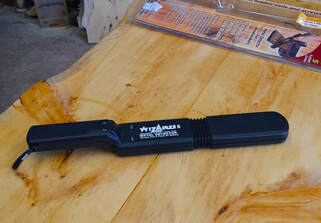 The Lumber Wizard 5 woodworking metal detector is a wand type metal detector that is designed to alert woodworkers whenever a metal object such as a nail, pin, bolt, wire, staples, etc. are buried inside wood. By sounding an immediate alert, the user is able to quickly locate then retrieve the metal object so as to prevent injury or tool damage. A laser line indicator illuminates when detection events occur, thereby allowing user to easily see where metal is buried. Regular use of the device will help to reduce damages of tools and injuries. The Lumber Wizard 5 Laser Line is the latest version of Wizard Industries' flagship woodworking metal detector. A powerful precision hand-held metal detector with automatic tuning and a laser indicator designed specifically for woodworkers, It helps detect small metal objects hidden inside new or used lumber. The new version features easier one-handed use, with automatic calibration every time the unit is turned on, and better false-positive rejection. Undetected nails, screws or other metal fragments can damage expensive jointer, planer and saw blades. Flying metal can also cause serious injury. Easy to use, the Lumber Wizard 5 helps woodworkers prevent equipment damage and personal injury. The Lumber Wizard has received hundreds of reviews for almost two decades from woodworkers and magazines across the country, and the new 5 version is even better! Automatic Tuning each time detector is turned on. Laser Line Indicator Projects Red Line onto scanned surface when metal is found. Helps pinpoint nails, screws, bullets and wire inside new or used lumber. Helps prevent costly blade damage and shop down time Quickly scan any size wood. Not affected by moisture content of wood. 6" wide scanning area. Durable, sturdy plastic casing. One 9 volt battery required. 1 year warranty. A note about metal detectors and tuning: Tuning is important as metal detectors are sensitive to ground balance (the mineralization content in the soil around us all) and the amount of humidity in the air. Tuning allows the detector coil to concentrate on high-density metallic materials at close range instead of the metals in the earth. Keeping the tuning precise and doing it often helps to find more small metal pieces, therefore the Wizard 5 does its own tuning automatically each time it is turned on. The difference in the Lumber Wizard 5 vs other types of wands is the ability to better control detection strength through precise automatic tuning. The Lumber Wizard is made to help detect wire, nails, screws, and small pieces of metal. Thus the importance of tuning often. Think of it as sharpening a blade automatically each time it is used! The Lumber Wizard 5 and Little Wizard II are designed to find nails, screws, staples and other metal buried inside wood. Designed as nail finders the Little Wizard and Lumber Wizard are ideal for searching for and locating nails and nail fragments buried inside old reclaimed barn wood. Barn wood can be riddled with nails, screws, wire, and other forms of metal. When metal buried inside barnwood is struck by a planer the planer blades get damaged. Often the cost of a good planer blade can be as much or more than the cost of a metal detector. The Lumber Wizard 5 and Little Wizard II offer two choices of cost and size. The main difference between these two detectors lies in the size of their metal detector coils. The Lumber Wizard 5 has a larger coil, measuring six inches by two inches, while the Little Wizard II has a smaller coil, measuring two and a half inches by half an inch. Generally, larger coils are more effective at detecting metal objects at greater depths, while smaller coils are better suited for detecting small or shallowly buried objects. However, the size of the coil is not the only factor that determines the effectiveness of a metal detector. Other factors, such as the detector's sensitivity, discrimination capabilities, and ground balance, can also play a role in how well it performs. Woodworking Metal Detectors Verses Common Security Wands. The Lumber Wizard and Little Wizard metal detectors are designed specifically for woodworking applications, where they are used to detect small metal items such as wood staples, nails, screws, pins, tacks, and other metal fasteners that may be embedded in lumber or other wood products. These detectors are highly sensitive to small metal objects and can help prevent damage to tools, equipment, and finished products by identifying and removing metal debris before it causes harm. On the other hand, typical security wands are designed to detect a wider range of metal objects, including those with more mass and size, such as knives, guns, blades, and other potentially dangerous materials. These detectors are used in various security settings, such as airports, courthouses, and public events, to ensure that individuals are not carrying prohibited items that could pose a threat to public safety. While there may be some overlap in the types of metal objects that these different detectors can detect, they are generally designed for different applications and environments, and their sensitivity and detection capabilities may vary accordingly. A new fully charged 9-Volt battery commonly lasts for weeks of daily use. Indications of a low 9-volt battery voltage are inconsistent detection or flashing laser. Always Use A New 9-Volt Battery. A fresh fully charged battery provides the most detection strength and uses time. A partially charged battery can cause false readings, less detection depth, and inconsistent laser. A fresh, fully charged 9-volt battery provides more than ample use time. A low battery can cost you blades, material, and lost time...... Length, 15"; width, 3-1/8"; height 1-1/8"; weight, 13 oz. Detects nails, screws, wire, bullets, and other metal objects inside recycled wood Quick, one-handed operation 6"-wide scanning area for faster scans. A Powerful Metal Detector Designed Specifically For Wood Workers! The New LUMBER WIZARD 5 Auto-Tuning Laser Line Woodworking Metal Detector is the latest version of Wizard Industries' flagship woodworking metal detector. woodworking metal detector. 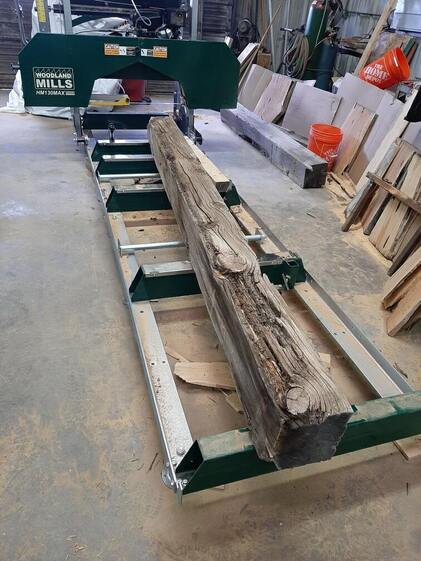 Metal detectors are often used in conjunction with portable sawmills to detect metal objects that may be embedded in logs before they are cut into lumber. Logs can contain various types of metal objects, such as nails, screws, bolts, and wire, that can cause damage to the saw blade or other equipment during the milling process. To avoid damaging the saw blade or other equipment, it is important to detect and remove any metal objects that are embedded in the logs before they are milled. This is where metal detectors come in. Metal detectors are used to scan the logs and detect any metal objects that may be present. Once the metal objects are detected, they can be removed, and the log can be safely milled into lumber. Portable sawmills can be used in remote locations where logs are harvested, and metal detectors can be used to scan the logs on site to ensure that they are free of any metal objects that could cause damage to the saw blade or other equipment. This is a cost-effective and efficient method for milling lumber on site, and it helps to reduce the risk of equipment damage and injury. Overall, metal detectors are an essential tool for portable sawmill operators who want to ensure that they are milling safe and quality lumber. The terms "reclaimed" and "salvaged" are often used interchangeably to describe wood that has been salvaged and repurposed from its original use. However, there are some differences in the meaning of these terms:
Image Courtesy CalWood.com
Reclaimed wood can require some special care and maintenance, but it is generally similar to caring for new wood. Here are some things to keep in mind when caring for reclaimed wood:
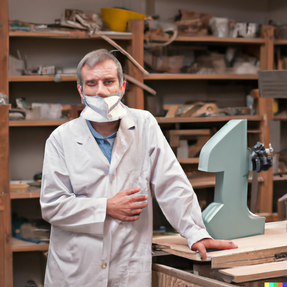 Doctors are known for their analytical and problem-solving skills, and some of them also enjoy woodworking as a creative and hands-on hobby. Woodworking can help doctors relax and unwind from the stresses of their demanding profession. Here are a few examples of doctors who engage in woodworking:
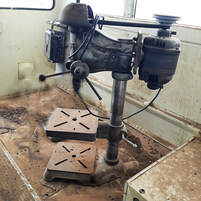 There are many ways to find used and old tools in the USA, from small businesses to government auctions. Here are some places and methods to look for used tools:
 A handheld metal detector can be a useful tool for woodworkers who use reclaimed wood. When wood is salvaged from old buildings or structures, it may contain hidden metal objects such as nails, screws, or other hardware. These metal objects can damage cutting tools or pose a safety hazard if they are not removed before processing the wood. A handheld metal detector can be used to quickly and easily locate hidden metal objects in reclaimed wood. The woodworker can run the metal detector over the surface of the wood to identify any hidden metal, and then use pliers or other tools to remove the metal objects before further processing the wood. There are a variety of handheld metal detectors available on the market, including those specifically designed for woodworkers. Some metal detectors may have adjustable sensitivity settings, allowing the woodworker to adjust the detection level for different types of wood or different sizes of metal objects. Overall, a handheld metal detector can be a useful tool for woodworkers who use reclaimed wood, helping to ensure that the wood is safe and free from hidden metal objects that could cause damage or safety hazards. Both the Lumber Wizard and the Little Wizard are reliable and easy to use handheld metal detectors that are specifically designed for woodworkers. They are useful tools for identifying any hidden metal objects in reclaimed wood, ensuring that woodworkers can work safely and effectively. Reclaimed wood can come from a variety of wood species, depending on the source and location. Some of the most common wood species used for reclaimed wood include:
Image Courtesy CalWood.com
Reclaimed wood can weather and change colors over time. Reclaimed wood may have a unique patina and character that develops as it ages and weathers. This natural aging process can add to the wood's charm and give it a unique character. Reclaimed wood can change colors due to exposure to light and air, as well as other environmental factors. For example, exposure to sunlight may cause the wood to fade or change color over time. The type of wood and its previous use can also affect how it ages and changes colors. To preserve the natural color and character of reclaimed wood, some woodworkers may choose to apply a protective finish, such as a sealant or wax. This can help protect the wood from further weathering and preserve its natural beauty. Overall, reclaimed wood can weather and change colors over time, which can add to its charm and unique character. By taking steps to protect and preserve the wood, its natural beauty can be enjoyed for many years to come. Image Courtesy CalWood.com
Reclaimed wood is milled similarly to new wood, but there are some differences to consider. Here are some of the steps involved in milling reclaimed wood:
Both the Lumber Wizard and the Little Wizard are reliable and easy to use handheld metal detectors that are specifically designed for woodworkers. They are useful tools for identifying any hidden metal objects in reclaimed wood, ensuring that woodworkers can work safely and effectively. The age of most reclaimed wood can vary widely depending on the source and the specific piece of wood. In general, reclaimed wood is typically between 50 to 100 years old, but it can be much older than that.
Some sources of reclaimed wood, such as old barns, factories, or warehouses, may have wood that is several hundred years old. In contrast, other sources of reclaimed wood, such as old furniture or shipping pallets, may have wood that is only a few decades old. The age of the wood can affect its condition and character. Older wood may have more distinctive grain patterns, color variations, and unique character marks than newer wood. However, older wood may also be more prone to damage or decay, so it is important to inspect the wood carefully before using it in a project. In summary, the age of most reclaimed wood can vary widely, but it is typically between 50 to 100 years old. However, it is important to consider the specific source and condition of the wood when purchasing and using reclaimed wood. There are several ways to purchase reclaimed wood, depending on your needs and location. Here are some options:
It's important to have a handheld metal detector such as a Lumber Wizard or a Little Wizard to locate nails, wire, pins, bullets, and screws. Most all reclaimed wood has an assortment of metal buried in it and that can be very damaging to tools, blades, knives, etc in woodworking tools. Image Courtesy CalWood.com
The cost of reclaimed wood for woodworkers can vary depending on several factors, including the type of wood, its condition, and its source. In some cases, reclaimed wood can be more expensive than new wood, while in other cases, it may be less expensive. One reason why reclaimed wood can be more expensive is that it may require more preparation work, such as cleaning, sanding, and trimming, to make it ready for use. Additionally, the cost of transporting reclaimed wood can be higher than new wood because it is often heavier and more difficult to move. However, in some cases, reclaimed wood can be less expensive than new wood, particularly if it is sourced locally or is less in demand. Additionally, using reclaimed wood may provide cost savings over time because it is often more durable than new wood and may not need to be replaced as frequently. Overall, the cost of reclaimed wood for woodworkers can vary depending on several factors, and it is important to consider the specific project's needs and budget before deciding whether to use reclaimed wood. There are several handheld metal detectors that are specifically designed for woodworkers to detect metal objects that may be hidden within reclaimed wood. The two most popular and oldest options are the Lumber Wizard and the Little Wizard. The Lumber Wizard is a handheld metal detector that is designed to detect metal objects up to 6 inches deep in wood. It has a sensitivity adjustment feature that allows woodworkers to customize the level of detection to their specific needs. The Lumber Wizard is also lightweight and easy to use, making it a popular choice among woodworkers. The Little Wizard is another handheld metal detector that is designed for woodworkers. It is smaller and more compact than the Lumber Wizard, making it ideal for use in tight spaces or on smaller pieces of wood. The Little Wizard can detect metal objects up to 1 inch deep in wood and also has a sensitivity adjustment feature. Both the Lumber Wizard and the Little Wizard are reliable and easy to use handheld metal detectors that are specifically designed for woodworkers. They are useful tools for identifying any hidden metal objects in reclaimed wood, ensuring that woodworkers can work safely and effectively. Little Wizard II Denailing Metal Detector
$34.95
The Little Wizard was created by @BillyCarmen beginning 1999 and are the only metal detectors created specifically for woodworkers to us when denailing reclaimed wood. Like any specialized tool this detector requires proper tuning and understanding of how to properly use. It's a Wizard but it is not magic!!! It's a real life metal detector that works very well when used as suggested. So please read and understand the directions. We are here 100% if you need. For Best Detection Requires NEW 9 volt battery with at least 8.6 volts. We suggest Duracell (not lithium batteries). Please do not just grab a battery out of your drawer and flop in. Save yourself time and detect metal with a brand new shiny full strength Duracell (non lithium) battery. A fresh battery is your best friend in metal detection!!! The Little Wizard is a precision hand held metal detector designed especially for woodworkers to use when denailing reclaimed wood. Perfect for scanning recycled wood for denailing to help find screws and nails before planing, routing, sanding or sawing, and other forms of metal detection. The Little Wizard accurately indicates metal buried inside recycled wood by emitting a high pitch beep tone and illuminating an array of LED's. The Little Wizard can pinpoint the exact location of metal. No guessing, extensive physical searching or unnecessary visual searching is needed with the Little Wizard for denailing. The Little Wizard is widely used by woodworkers everywhere for denailing reclaimed wood. It will save your steel woodworking blades and knives. It's small size and unique detection strength allow it to be used to quickly detect damaging nails, screws and other dangerous metal buried inside of wood. The Little Wizards adjustable sensitivity makes pinpointing easy and accurate. The Little Wizard precisely indicates metal by emitting a high pitch beep tone and illuminating an array of LED's. There's simply no better economical, portable metal detector made for helping with denailing wood. Lumber Wizard 5 Denailing Metal Detector
$149.95
The Lumber Wizard 5 denailing metal detector with laser is a wand type metal detector that is designed to alert woodworkers whenever a metal object such as a nail, pin, bolt, wire, staples, etc. are buried inside wood. By sounding an immediate alert, the user is able to quickly locate then retrieve the metal object so as to prevent injury or tool damage. A laser line indicator illuminates when detection events occur, thereby allowing user to easily see where metal is buried. Regular use of the device will help to reduce damages of tools and injuries. New for 2019.... The Lumber Wizard 5 Laser Line is the latest version of Wizard Industries' flagship woodworking metal detector for denailing. A powerful precision hand-held metal detector with automatic tuning and a laser indicator designed specifically for woodworkers, It helps to speed denailing to detect small metal objects hidden inside new or used lumber. The new version features easier one-handed use, with automatic calibration every time the unit is turned on, and better false-positive rejection. Undetected nails, screws or other metal fragments when denailing can damage expensive jointer, planer and saw blades. Flying metal can also cause serious injury. Easy to use, the Lumber Wizard 5 helps woodworkers prevent equipment damage and personal injury. The Lumber Wizard has received rave reviews for denailing for over two decades from woodworkers and magazines across the country, and the new 5 version is even better! Automatic Tuning each time detector is turned on. Laser Line Indicator Projects Red Line onto scanned surface when metal is found. Helps pinpoint nails, screws, bullets and wire inside new or used lumber. Helps prevent costly blade damage and shop down time when denailing Quickly scan any size wood. Not affected by moisture content of wood. 6" wide scanning area. Durable, sturdy plastic casing. One 9 volt battery required. 1 year warranty. A new fully charged 9-Volt battery commonly for days of daily constant use. Indications of a low 9-volt battery voltage are inconsistent detection or flashing alternating LED's. Always Use A New 9-Volt Battery. A fresh fully charged battery provides the most detection strength and uses time. A partially charged battery can cause false readings, less detection depth, and inconsistent laser. A fresh, fully charged 9-volt battery provides more than ample use time and better denailing. A low battery can cost you blades, material, and lost time...... Length, 15"; width, 3-1/8"; height 1-1/8"; weight, 13 oz. Detects nails, screws, wire, bullets, and other metal objects inside recycled wood Quick, one-handed operation 6"-wide scanning area for faster scans A Powerful Metal Detector Designed Specifically For Wood Workers! The New LUMBER WIZARD 5 Auto-Tuning Laser Line Woodworking Metal Detector is the latest version of Wizard Industries' flagship woodworking metal detector. Image Courtesy CalWood.com
Reclaimed wood refers to wood that has been previously used in a building or structure and is salvaged and repurposed for a new project. There are several benefits to using reclaimed wood for woodworking:
In summary, using reclaimed wood can provide unique and interesting characteristics to woodworking projects, while also providing environmental benefits by reducing demand for new wood. Metal detectors such as the Little Wizard and Lumber Wizard can help woodworkers safely and efficiently work with reclaimed wood by detecting hidden metal objects. 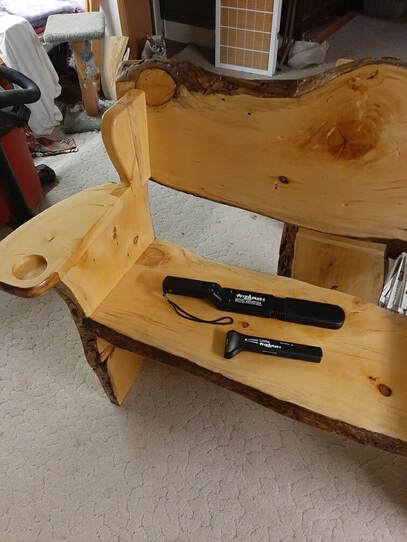 Wizard Industries, Inc. in Ukiah California are the creators and providers of the Little Wizard and Lumber Wizard woodworking metal detectors. Wizard Industries was the first company to engineer a hand held metal detector for woodworking. Wizard Industries first released the Little Wizard back in 1999. After the Little Wizard quickly gained recognition in the woodworking industry among woodworkers that needed a solution to frequently hitting buried metal as they planed, routed or sawed through reclaimed wood Wizard developed the Lumber Wizard which is a larger type wand metal detector. Fast forward to 2023 and the Little Wizard is basically the same as it was back in 1999 with the exception of stronger detection than what it had in the beginning. The Lumber Wizard however has gone through 5 advancements and is now the Lumber Wizard 5. It now includes a laser that projects a bright red line onto the surface of wood when metal is detected. The laser in the Lumber Wizard 5 is a big help to woodworkers as it shows precisely where metal is buried.  Lumber Wizard and Little Wizard are two popular brands of metal detectors designed specifically for use in the woodworking industry. These devices are used to detect metal hidden inside wood, such as nails, screws, or other fasteners, before they can cause damage to saw blades or other cutting tools. When using reclaimed wood or portable sawmills, it's important to be aware of the potential for hidden metal. Reclaimed wood is often salvaged from old buildings or other structures and may contain embedded metal from nails or other fasteners. Portable sawmills are also vulnerable to metal damage, as they can come into contact with nails or other debris hidden inside logs. If metal is not detected and removed prior to cutting or milling the wood, it can cause serious damage to cutting blades or other tools, leading to costly repairs or replacements. It can also pose a safety risk for workers, as metal debris can become dangerous projectiles when caught in the cutting process. By using a metal detector like Lumber Wizard or Little Wizard, woodworkers can identify and remove hidden metal before it causes any damage. This can save time, money, and reduce the risk of accidents in the workshop. The popularity of reclaimed wood has been steadily increasing in recent years, driven by several factors. Here are some of the reasons why reclaimed wood has become so popular:
When using reclaimed wood it is advised to use a handheld metal detector to find buried nails, screws, wire, etc. Both the Lumber Wizard and the Little Wizard are reliable and easy to use handheld metal detectors that are specifically designed for woodworkers. They are useful tools for identifying any hidden metal objects in reclaimed wood, ensuring that woodworkers can work safely and effectively. The history of the wood router can be traced back to the early days of woodworking. A router is a versatile power tool used for shaping and cutting various materials, primarily wood. It consists of a spinning cutter bit that can be guided along the edge of a workpiece or moved freely to create intricate designs, grooves, and profiles.
Early Hand Routers: Before the advent of power tools, woodworkers used hand-powered tools called router planes for similar purposes. Router planes were simple tools with a flat, L-shaped base and a vertically adjustable blade or iron. The woodworker would push the router plane along the wood surface, guiding the blade to cut grooves or shape edges. These tools were widely used in woodworking and cabinetry for creating joinery and decorative details. The Emergence of Electric Routers: In the early 20th century, with the widespread availability of electricity and the development of electric motors, the first electric routers were introduced. These early routers were cumbersome and challenging to control, but they allowed woodworkers to perform tasks that were previously time-consuming and labor-intensive with relative ease. The first patent for an electric router was granted to R. L. Carter in 1905, but the design was not commercially successful. In the 1920s, improvements in electric motor technology led to more compact and efficient routers. The Porter-Cable Corporation, an American power tool manufacturer, introduced their first electric router in 1924, which became popular among professional woodworkers. Plunge Routers and Further Innovations: As woodworking technology advanced, so did the design of electric routers. In the 1940s, the plunge router was introduced, allowing woodworkers to lower the spinning bit into the material at a controlled depth, making it possible to create stopped cuts and mortises. This feature significantly expanded the versatility and applications of the router in woodworking. Over the years, manufacturers have continued to refine and improve the design of routers, with features such as variable speed controls, soft-start motors, and dust collection systems. Additionally, a wide variety of router bits have been developed, enabling woodworkers to create an extensive range of shapes, profiles, and decorative effects. In summary, the history of the wood router begins with hand-powered router planes used for shaping and cutting wood. With the development of electric motors in the early 20th century, electric routers became popular tools in woodworking shops. Innovations such as plunge routers and a vast selection of router bits have made the router an indispensable tool for modern woodworkers, providing unmatched versatility for shaping and cutting a wide range of materials. |
ScribesWritten by ChatGPT with guidance from Billy Carmen. Past Blog Posts
June 2023
This website uses marketing and tracking technologies. Opting out of this will opt you out of all cookies, except for those needed to run the website. Note that some products may not work as well without tracking cookies. Opt Out of Cookies |

